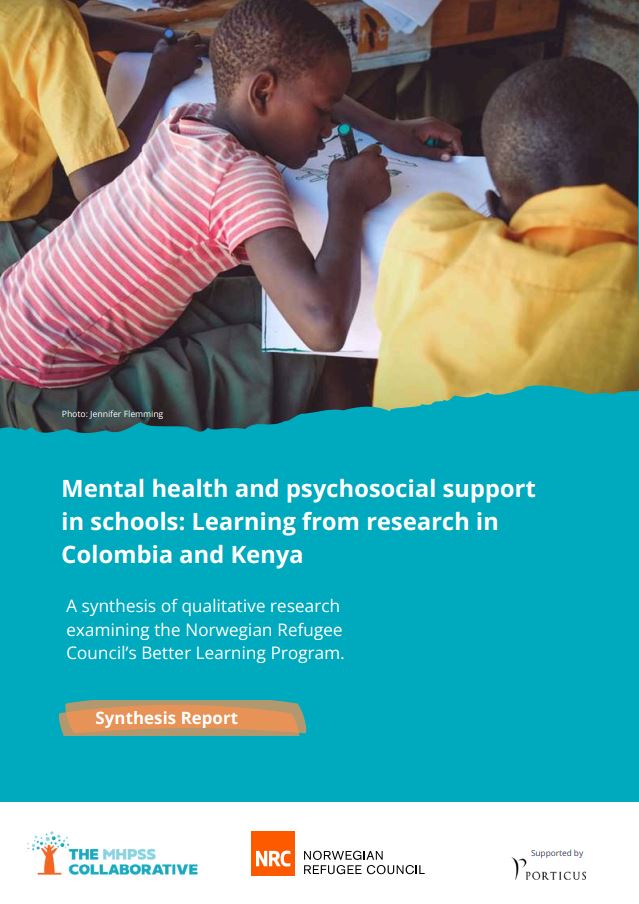A synthesis of qualitative research examining the Norwegian Refugee Council’s Better Learning Program in Colombia and Kenya.
At the end of 2022, 40% of the nearly 110 million forcibly displaced people globally were children under the age of 18. Displaced children face acute and chronic adversities that significantly threaten their mental health and psychosocial wellbeing. Research emphasizes that children exposed to war and displacement exhibit a range of distress and stress reactions, including specific fears, dependent behaviors, psychosomatic symptoms, and aggressive behaviors. The urgent needs of children in humanitarian crises underpin various policies and programmatic approaches that include increasing attention to both MHPSS services broadly and in education approaches specifically.
There is increasing recognition that quality education is reflected not just in academic outcomes such as literacy and numeracy, but also in those indicating learner psychosocial wellbeing. Learners are embedded within a context of specific relationships, environments, and systems that notably influence their daily lives, learning, and holistic wellbeing. These socio-ecological factors are complex and context-specific, and can have a significant impact on the efficacy of an intervention aimed at supporting children’s growth and learning.
Colombia is facing a deep-rooted humanitarian crisis, fueled by internal conflicts since 1958 and resulting in over 2.17 million IDPs by 2022. This crisis has been compounded by the arrival of more than 2.47 million Venezuelan migrants by May 2023. These factors have led to widespread community displacement, poverty, and disruption to daily life. The nation is recognized as the third most neglected in terms of displacement crises globally, with a mere 38% of its funding needs met and dwindling media attention to the conflict. Education has been particularly impacted, with displaced children facing numerous educational barriers and schools in IDP-dense areas struggling with overcrowding and limited resources.
In 2023 the number of registered refugees and asylum seekers within Kenya’s borders was approximately 655,000. Refugees are spread across three primary camps (Dadaab, Kakuma, and Kalobeyei integrated settlement), and are also integrated into host communities in both urban and rural settings. Currently, all camps face challenges related to overcrowding, limited access to basic services (such as healthcare, adequate food, education, and clean water), and poor economic opportunities. Refugees often face significant mental health challenges due to the traumas they have experienced prior to arrival in Kenya, including exposure to violent conflict, displacement, and extreme loss.
This report examines the enabling environments for MHPSS interventions delivered in education settings in humanitarian contexts, with specific focus on NRC’s BLP implemented in Kenya and Colombia. The report combines the learnings from the full research in each of the two countries, emphasizing both the role and value of MHPSS in education programming, as well as the specific perceptions of impact and implementation of the intervention by various education stakeholders. It concludes with a summary of key action points that emphasize enabling factors for intervention efficacy, and that are relevant for stakeholders including schools, communities, implementing organizations, policy and decision-makers, and donors.
In both Kenya and Colombia, the research emphasized that MHPSS programs need to be accompanied by interventions that help meet the basic needs of the population in order to truly improve mental health and wellbeing. Schools, and the relationships with trusted adults that are cultivated there, must offer both physical and emotional safety to learners.
